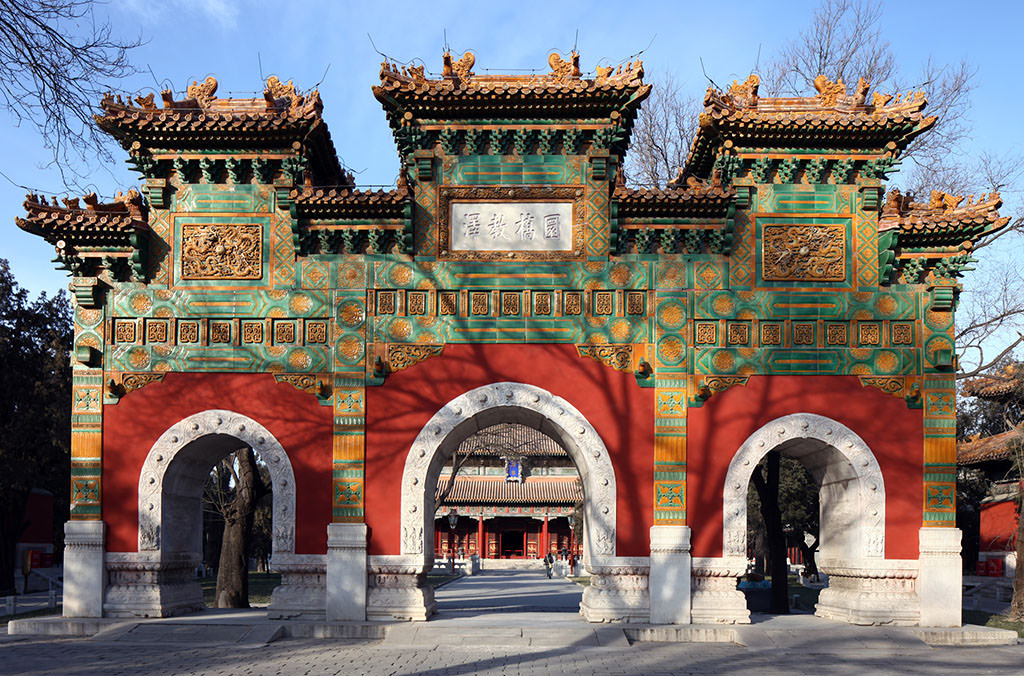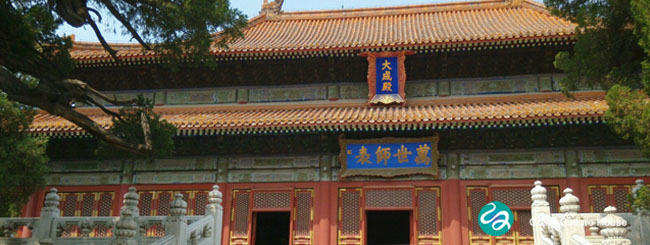TEMPLE OF CONFUCIUS IN BEIJING
(北京孔庙 pinyin:Běijīng Kǒngmiào) is the second largest Confucian Temple in China,after the one in Confucius' hometown of Qufu.
The Temple of Confucius in Beijing(孔庙 Kǒngmiào) is the second largest Confucian Temple in China, except the one in Confucius' hometown of Qufu.
The temple was built in 1302, and officials used it to show their respects to Confucius until 1911. The compound was enlarged twice, during the Ming and Qing dynasties and now occupies some 20,000 square meters. From 1981 until 2005, the Temple of Confucius also reserved part of the art collection of the Capital Museum. It stands on Guozijian Street which near to the Imperial Academy.
The buildingsconsist of four courtyards aligned along a central axis. From south to north, including Xianshi Gate (先师门), Dacheng Gate (Gate of Great Accomplishment, 大成门), Dacheng Hall (Hall of Great Accomplishment, 大成殿) and Chongshengci (崇圣祠). Inside the temple there are 198 stone tablets positioned on each side of the front courtyard, and they contains more than 51,624 names of jinshi s(advanced scholars) of the Yuan, Ming and Qing dynasties, and 14 stone stelepavilions of the Ming and Qing dynasties that preserve various historical documents of ancient China.
The temple also contains stone tablets recording the names of many generations of scholars who passed the Imperial Examination, a reproduction of a Western Zhou dynasty stone drum made during the reign of the Qianlong Emperor (1735-96), and stone steles contain the Thirteen Confucian Classics, presented by the city of Jintan in Jiangsu Province.
There is set of carved stone drums made between 1736–1795 during the Qianlong period of the Qing dynasty held in the Gate of Great Accomplishment, and there is also a large collection of ancient Chinese musical instrument located in the Hall of Great Perfection, along with the central shrine to Confucius.
There are various carvings inside the temple. One notable example is a famous carving of 'two flying dragons, playing a pearl among clouds. '; Tthis rare image is seldom to be found in other Confucius temples in China or East Asia. There are alsomany old trees in the temple, including one cypress tree known as the 'Touch Evil Cypress' (Chu JianBai), that has become famous through folklore for its age. Its name derives from a Ming dynasty story that when a notoriously corrupt official was passing by, the tree knocked off his hat, and since then people have thought this particular tree could distinguish between good and evil.

THE TEMPLE OF CONFUCIUS IN BEIJING(5张)



